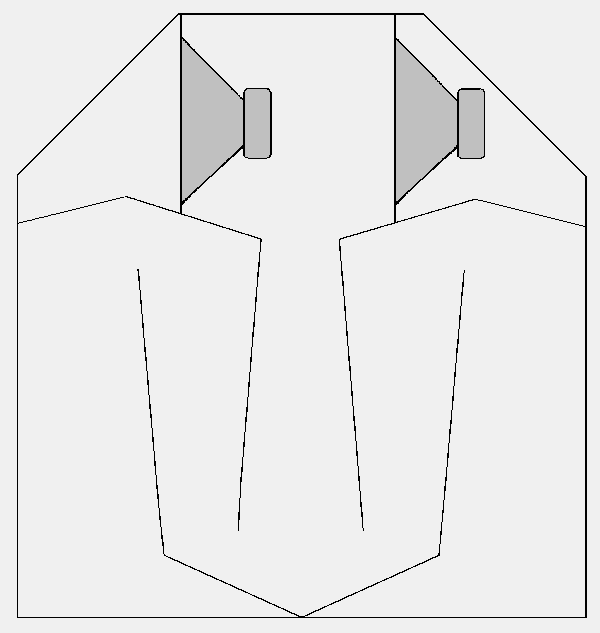The second harmonic is caused by asymmetry. Anything that causes asymmetry will cause even order harmonic distortion.The main thing that causes asymmetry in a loudspeaker is the magnet, not the suspension or pneumatic loading. Those are both much more linear than magnetic flux.
What causes magnetic flux to be asymmetrical is modulation from the voice coil. When the voice coil flux is in the same polarity as the fixed magnet, then total flux is the sum of the two. But when voice coil flux is in opposite polarity, then the total flux is the difference of the two. So a loudspeaker literally pushes more in one direction than the other, even if only by a very small amount. This is the main cause of harmonic distortion in loudspeakers.
See the link:
Magnetic StructuresUsing a shorting ring really helps reduce harmonic distortion. It works by acting as a shorted secondary that counteracts flux modulation. When the voice coil is energized, it creates a magnetic field that interacts with the fixed magnet. This moves the voice coil and it also induces current in the shorting ring, which creates a magnetic field of its own. The magnetic field of the shorting ring is the opposite of that from the voice coil, and it serves to reduce flux modulation. It doesn't interact enough to cancel movement, just a small amount, enough to counter flux modulation. The idea is to make movement symmetrical, and it does this very well. It reduces harmonic distortion.
The push-pull arrangement cancels harmonic distortion too. It does it in a different way. Instead of reducing asymmetry in the motor, it uses two of them and drives them in opposite directions. The idea is that one will be slightly stronger than the other on each half-cycle, and the opposite is true on the other half-cycle. A balance is struck because each half-cycle has a "strong" driver and a "weak" driver.

A horn reduces distortion simply by reducing excursion. That's good, but it doesn't do anything to increase symmetry. And in the case of basshorns, the system may be driven below the frequency where the horn is effective. So my thoughts are that improved symmetry is always good. Horn loaded or not, folded or not, reduced distortion motors are desireable. In the horn's passband, improved symmetry serves to reduce distortion even more than the horn's reduced excursion provides. And in the case of a basshorn driven very low, the system reverts to being that of a direct radiator, so whatever linearity is built-in to the motor system is all you've got.
Some have said that horn folding and front chambers reduce harmonics by attenuation. That is true. But what always troubled me with this reasoning is that the subsystems are used for more than an octave, so harmonics are presented within the passband. Sure, some of the higher frequency harmonics are attenuated by the front chamber and folds, but a lot of harmonics aren't. It just never made any sense to me to ignore the motor's distortion products. It seems obvious to me that the system is improved by employing symmetry-enhancing technologies.
Honestly, for fidelity's sake, I think I'd rather have direct radiators with shorting rings or a push-pull arrangement than a horn-loaded subwoofer using ferrite magnet woofers without shorting rings. Unless the horn can be made huge, it's going to have an excursion jump down low. That's where the flux stabilized or push-pull arrangement can help, and where the horn really can't.
If I have no design limits, the horn can be made huge and the drivers high quality with symmetrical movement. But in the real world with its real world design constraints, I think I'd take symmetry control over excursion control if high-fidelity were the goal. So to me, the decision to go with flux stabilization or push-pull plenums is very attractive. Horn loading is too, but again, it's only as good as size will allow. Symmetry doesn't require size.







